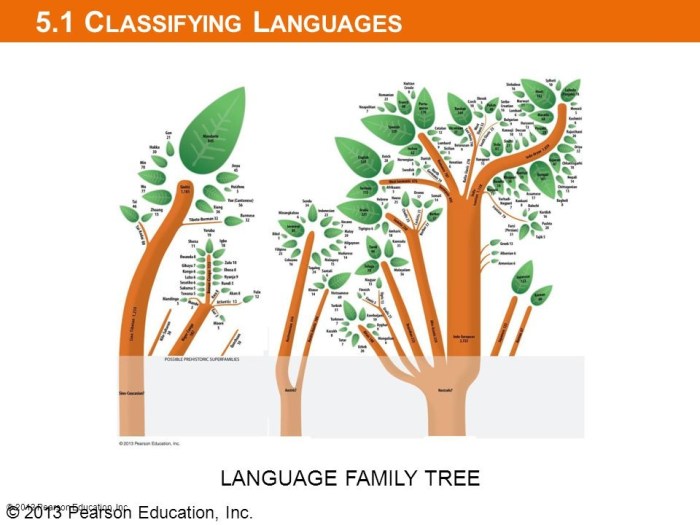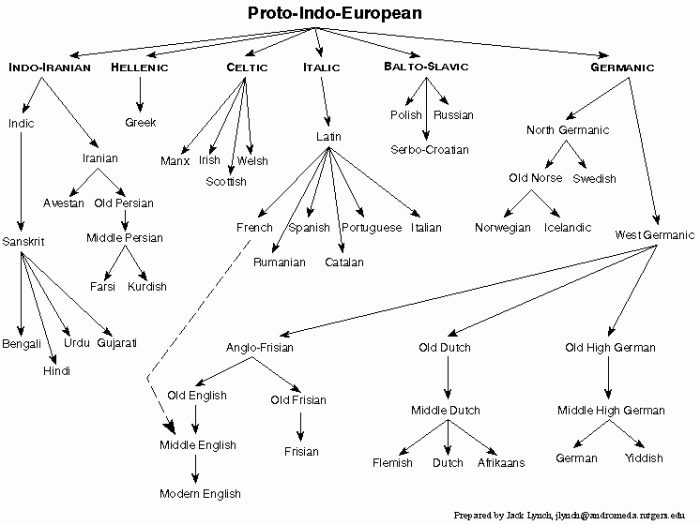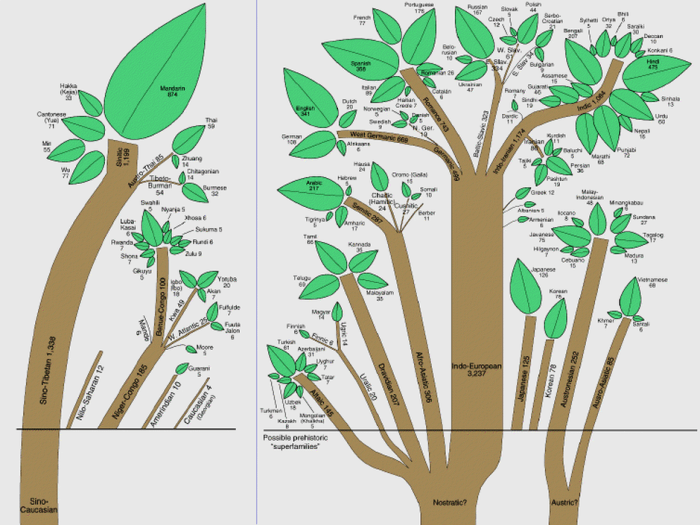Indo european language family ap human geography – The Indo-European language family, a diverse and influential linguistic group, has played a pivotal role in shaping human geography. From its origins in the steppes of Central Asia to its widespread expansion across Europe and beyond, the Indo-European language family has left an indelible mark on cultures, political boundaries, and the spread of ideas.
This comprehensive overview explores the origins, characteristics, and branches of the Indo-European language family. It examines the linguistic features that unite these languages, the geographic distribution of their branches, and the profound impact they have had on human history.
Origins of the Indo-European Language Family

The Indo-European language family is one of the most widespread and influential language families in the world. It is spoken by over 3 billion people across Europe, Asia, and the Americas.
The geographic origins of the Indo-European language family are still debated, but most scholars believe that it originated in the steppes of Central Asia.
The Indo-European languages began to spread from their homeland around 4,000 BC. The first major migration was to the east, into India and Iran. The second major migration was to the west, into Europe.
The Indo-European language family is closely related to the Uralic and Altaic language families. These three language families are thought to have descended from a common ancestor language that was spoken around 6,000 BC.
Characteristics of the Indo-European Language Family

The Indo-European language family is characterized by a number of linguistic features, including:
- A three-gender system (masculine, feminine, and neuter)
- A case system that marks nouns and adjectives for their grammatical function
- A system of verb tenses and moods
- A vocabulary that includes many cognates, or words that are similar in sound and meaning
The Indo-European languages are also known for their rich and varied literature, which includes some of the world’s most famous works of literature, such as the Iliad, the Odyssey, and the Bible.
Branches of the Indo-European Language Family

The Indo-European language family is divided into a number of branches, including:
| Branch | Languages |
|---|---|
| Anatolian | Hittite, Luwian |
| Armenian | Armenian |
| Baltic | Lithuanian, Latvian |
| Celtic | Irish, Welsh, Breton |
| Germanic | English, German, Dutch |
| Greek | Greek |
| Indo-Iranian | Sanskrit, Persian, Hindi |
| Italic | Latin, Italian, Spanish |
| Slavic | Russian, Polish, Czech |
| Tocharian | Tocharian A, Tocharian B |
The Indo-European Language Family in Human Geography: Indo European Language Family Ap Human Geography

The Indo-European language family has had a profound impact on human geography.
The spread of the Indo-European languages has led to the formation of many different cultural and political boundaries.
The Indo-European languages have also played a major role in the spread of ideas and technologies.
For example, the Greek language was the language of science and philosophy in the ancient world. The Latin language was the language of the Roman Empire. And the English language is the lingua franca of the modern world.
Detailed FAQs
What is the geographic origin of the Indo-European language family?
The geographic origin of the Indo-European language family is believed to be the steppes of Central Asia, north of the Caspian Sea.
What are some of the key linguistic features of the Indo-European language family?
Key linguistic features of the Indo-European language family include a three-gender system, a system of declensions, and a rich system of verb tenses.
How has the Indo-European language family influenced human geography?
The Indo-European language family has influenced human geography by shaping cultural and political boundaries, facilitating the spread of ideas and technologies, and contributing to the development of writing systems.